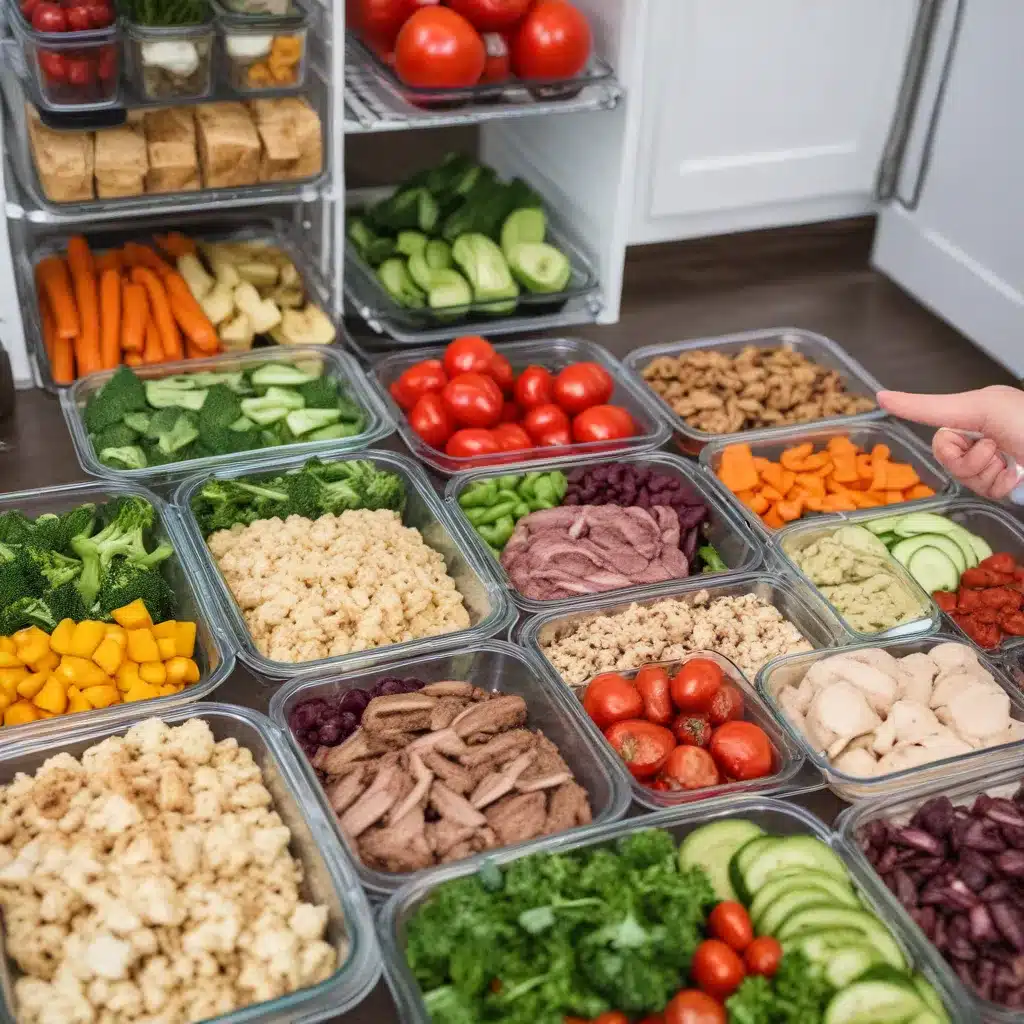
The Benefits of Meal Planning for Meal Prep
As a seasoned culinary professional, I know firsthand the power of meal planning and preparation to streamline your cooking routine and save you time in the kitchen. In today’s fast-paced world, having a well-thought-out meal plan can be the difference between wasting precious minutes scrambling for ingredients or enjoying a delicious, home-cooked meal with minimal effort.
Meal planning is the foundation for successful meal prepping, allowing you to strategize your weekly meals, grocery shopping, and food storage. By taking the time to plan ahead, you can unlock a world of benefits, including:
- Reduced Stress: Knowing exactly what you’ll be cooking for the week takes the guesswork out of meal time, eliminating the daily struggle of “what’s for dinner?”
- Improved Nutrition: A thoughtful meal plan ensures you’re incorporating a variety of healthy, whole foods that support your dietary needs and goals.
- Reduced Food Waste: Carefully coordinating your meals to use up perishable ingredients helps minimize food waste and saves you money.
- Increased Efficiency: With a plan in place, your grocery shopping and meal prep routines become more streamlined, freeing up time for other priorities.
Time-Saving Strategies for Meal Prep
Whether you’re new to meal planning or a seasoned pro, there are always ways to refine your approach and become even more efficient in the kitchen. Let’s explore some proven, time-saving strategies to elevate your meal prep game.
Plan Ahead for the Whole Week
Epicurious recommends planning your meals for the entire week at once, rather than tackling it day-by-day. This holistic approach allows you to identify opportunities to reuse ingredients across multiple dishes, reducing your overall grocery list and shopping time.
Try to arrange a week’s worth of breakfasts, lunches, and dinners all at once. This not only saves you time, but also helps you avoid impulse purchases at the grocery store. As you plan, look for ways to use the same core ingredients – such as grilled chicken or roasted vegetables – in different recipes throughout the week.
Leverage Passive Cooking Methods
One of the easiest ways to save time on meal prep is to utilize passive cooking methods like slow cookers, Instant Pots, or ovens. These tools allow you to “set and forget” your meal, freeing you up to tackle other tasks while your food simmers or roasts to perfection.
Plan to Eat recommends pairing ingredients that cook at similar rates, such as starchy root vegetables and lean proteins, to streamline your preparation and cooking time. This one-pot or one-pan approach minimizes both the active cooking and the cleanup.
Prepping Ingredients in Advance
Chopping, dicing, and slicing ingredients can be one of the most time-consuming aspects of meal prep. Meal Village suggests tackling these prep tasks all at once, either immediately after grocery shopping or on a designated “prep day.”
Wash, chop, and store your fresh produce as soon as you get home from the market. This allows you to quickly access pre-prepped ingredients when it’s time to cook. You can even go a step further and cook larger portions of proteins, such as grilled chicken or roasted vegetables, to use throughout the week.
Embrace Versatile Recipes and Ingredients
When building your meal plan, seek out recipes that allow you to repurpose ingredients across multiple dishes. This not only saves you time in the kitchen, but also helps minimize food waste.
For example, if you roast a whole chicken one night, you can shred the leftover meat to use in a chicken salad or stir-fry later in the week. Similarly, cooked grains like rice or quinoa can be transformed into a variety of meals, from fried rice to breakfast porridge.
Label and Organize Your Fridge
Take a few extra minutes to label and organize your refrigerator after your grocery run or meal prep session. Meal Village emphasizes the importance of having a designated spot for each type of ingredient, making it quick and easy to locate what you need when it’s time to cook.
Additionally, removing any expired or spoiled items from your fridge can streamline your workflow and keep your prepared meals looking (and tasting) their best.
Batch Cooking and Freezing
Another time-saving tip is to prepare larger batches of dishes that freeze well, such as soups, stews, and casseroles. Meal Village suggests cooking these types of meals in advance and storing them in portion-sized containers. That way, you can simply reheat and enjoy a homemade meal on those busy weeknights when you don’t have time to cook from scratch.
You can also freeze liquid ingredients like pesto or broth in ice cube trays for easy portioning when you need them for future recipes.
Putting It All Together
Meal planning and prepping may seem daunting at first, but the long-term benefits are well worth the initial investment of time and effort. By adopting these time-saving strategies, you can reduce stress, eat healthier, and enjoy more quality time outside the kitchen.
Remember, the key to successful meal planning and prepping is to start small and gradually build up your routine. Experiment with different approaches to find what works best for your lifestyle and preferences. And don’t be afraid to get creative – the Kitchen Warrior blog is always here to provide fresh inspiration and expert guidance to help you become a meal prep pro.


